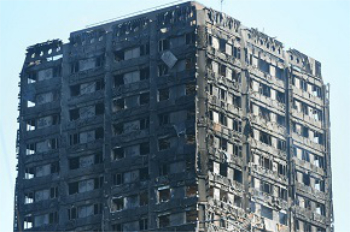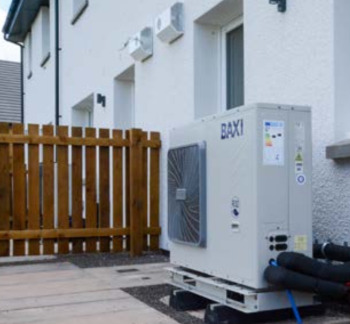Preparing Commercial Spaces for Winter: Balancing Heating and Airflow
Contents |
[edit] Creating effective comfortable environments
Any commercial space should provide a comfortable environment for those who work in it and those who visit it, whether they are guests or customers. However, the size and structure of many commercial buildings can make it difficult to regulate air flow and temperature, especially in the winter.
This does not just impact on comfort levels, but also safety and so it is essential that heating and airflow are carefully balanced within a building through an effective HVAC system.
Here is a look at the best ways to achieve the perfect heating and airflow balance during the winter, and how you can prepare your commercial space to make this more effective.
[edit] What is airflow and heat balancing?
If your commercial building has an HVAC system, then it needs to be able to maintain comfortable temperatures and clean air at all times. This makes it easier and more efficient to maintain your ideal temperature for the space and can also improve the lifespan of your air conditioning system.
In addition to this, it can ensure that there is still a steady flow of clean air throughout the building as filters are able to work more effectively at dealing with allergens, viruses, and particulate matter.
[edit] How does an imbalance occur?
You might assume that your HVAC system can deal with this balance by itself, but many commercial buildings will experience problems at some time or another in relation to this. It could be as a result of defective or worn-out parts or dirty filters which need to be cleaned or replaced. An HVAC technician can assess your system fully to find anywhere that adjustments could be made or identify any necessary repairs.
[edit] Ideal temperatures
Getting the temperature of a space right is always difficult as you can never, please everyone. However, most experts agree that the ideal temperature for an office space is between 19 and 22°C.
As you are likely to be using your heating a lot through the winter, it is important to consider how much this is likely to cost you, as lowering the thermostat by just a single degree can make as much as 10% difference to your heating bill.
It is worth bearing this in mind if you are going to be using the heating a lot over the winter season, as cranking it up to its highest level may not always be the right solution.
[edit] Perfect ventilation
Ventilation is especially important during the winter when there are a lot more coughs, colds and viruses doing the rounds. Commercial spaces mean that a lot of people are in the same environment for a long period of time, all of them breathing things out into the atmosphere.
Using an HVAC system that can help to circulate and filter your air can ensure that you maintain a much higher indoor air quality that is safer for people to breathe. As it is the time of year where you are less likely to have doors and windows open, it can also be important to help remove dust particles, allergens and pollen that can also lead to allergic responses and illnesses.
Ventilation is also very effective at ensuring that the air is both clean and dry, which means that your space can be heated faster. This means that you are able to use your heating system in a more effective way during the winter months.
Balancing your heat and air flow throughout the winter is incredibly important for everyone within your commercial building. It can keep them more comfortable, healthier and ensure that your bills are lower if everything is working exactly as it should be.
[edit] Related articles on Designing Buildings
- Air conditioning.
- Air handling unit.
- Building management systems.
- Building services
- Building services engineer.
- CFD.
- Dehumidification.
- Displacement ventilation.
- Drivers of change in global heating markets.
- Ductwork.
- Fan coil unit.
- Heating.
- Humidification.
- HVAC.
- HVACR.
- Mechanical, electrical and plumbing MEP.
- Mechanical ventilation.
- Natural ventilation.
- Plant room.
- Refrigeration.
- Thermal comfort.
- Ventilation.
Featured articles and news
Grenfell Tower Principal Contractor Award notice
Tower repair and maintenance contractor announced as demolition contractor.
Passivhaus social homes benefit from heat pump service
Sixteen new homes designed and built to achieve Passivhaus constructed in Dumfries & Galloway.
CABE Publishes Results of 2025 Building Control Survey
Concern over lack of understanding of how roles have changed since the introduction of the BSA 2022.
British Architectural Sculpture 1851-1951
A rich heritage of decorative and figurative sculpture. Book review.
A programme to tackle the lack of diversity.
Independent Building Control review panel
Five members of the newly established, Grenfell Tower Inquiry recommended, panel appointed.
Welsh Recharging Electrical Skills Charter progresses
ECA progressing on the ‘asks’ of the Recharging Electrical Skills Charter at the Senedd in Wales.
A brief history from 1890s to 2020s.
CIOB and CORBON combine forces
To elevate professional standards in Nigeria’s construction industry.
Amendment to the GB Energy Bill welcomed by ECA
Move prevents nationally-owned energy company from investing in solar panels produced by modern slavery.
Gregor Harvie argues that AI is state-sanctioned theft of IP.
Heat pumps, vehicle chargers and heating appliances must be sold with smart functionality.
Experimental AI housing target help for councils
Experimental AI could help councils meet housing targets by digitising records.
New-style degrees set for reformed ARB accreditation
Following the ARB Tomorrow's Architects competency outcomes for Architects.
BSRIA Occupant Wellbeing survey BOW
Occupant satisfaction and wellbeing tool inc. physical environment, indoor facilities, functionality and accessibility.
Preserving, waterproofing and decorating buildings.























